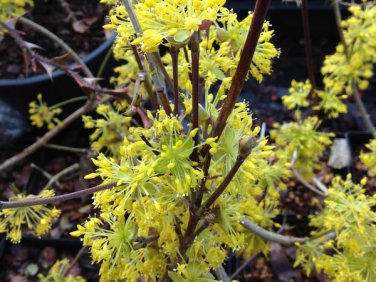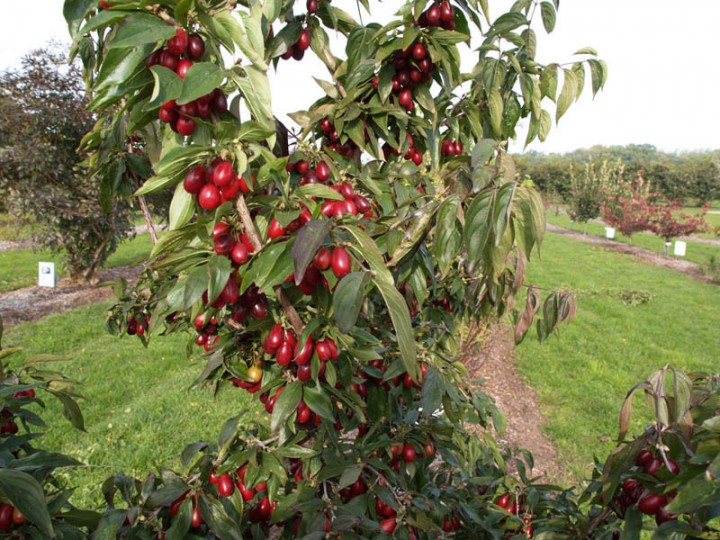
The longest flowering period (from 28 January to 26 March) of 48 days was found in genotype BPC8. Very early flowering genotypes (KMC1 – January 19, KDC6 – 22 January) are characterized in secondary origin, while flowering was latest with genotypes that are located in open spaces (LC group), in forest stands (CE group) or at high altitudes (GC group). Based on the results, 66 genotypes were selected for which we showed detailed pomological characterization. Also, we found a very large variation in flowering time and maturity, morphometric properties of fruits and nutrients content. In order to inventory the natural populations and secondary provenance of Cornelian cherry (Cornus mas L.) in the regions of Vojvodina and Macva (Serbia) over three years of research (2007 – 2009) hundreds of genotypes were registered. The tested methods of vegetative propagation have shown that the safest propagation method is grafting selected genotypes and selections on two-year old seedlings. There has been very satisfactory rooting of softwood cuttings in controlled environments, for which biochemical parameters of rooting were examined to. In order multiplicate selected genotypes vegetative propagation with softwood and hardwood cuttings and grafting was examined. The total phenol content and antioxidant activity showed that cornelian cherry has significant antioxidant properties. Based on chemical composition of fruit flesh we identified genotypes suitable for processing to clear juices and concentrates, or fruit puree, depending on the content of examined parameters. These genotypes with large fruits and balanced chemical composition can be recommended for fresh use. Within this group, all genotypes have a very high flesh to stone ration, but clearly distinct is genotype PPC1 with largest fruit weight (6.64 g) and flesh to stone ratio (88.55%), followed by the genotype R1, with large fruits (4.51 g) and high flesh to stone ratio (87.73%). Grouping of related genotypes on the basis of the traits, what are significant for the further fruit breeding program, was carried out using Cluster analysis, which focuses on the cluster of cultivars with large fruit and high flesh to stone ration.
U 26 CORNUS MAS FULL
Based on time of ripening stand out genotypes whose fruits have early (KLC – July 19, KDC1 – July 24, KIC1 – 26 July) or late (KC2 – September 11, Backa – September 7, Yellow – 6 September) stage of full maturity. Interestingly, the wood is denser than water and doesn't float.In order to inventory the natural populations and secondary provenance of Cornelian cherry (Cornus mas L.) in the regions of Vojvodina and Macva (Serbia) over three years of research (2007 – 2009) hundreds of genotypes were registered. A dye is produced from the bark and tannins are produced from the leaves. There are several named cultivars grown either for their ornamental merits or fruit production.


It is also used in Armenia for distilling vodka! It bears astringent, cherry-like fruits in midsummer which, when fully ripened, are used for making jam or a delicious sauce similar to cranberry sauce. Hardy and reliable, Cornus mas will grow in some shade but you will find it flowers better in a position with full sun.ĭespite the common name this small tree is actually a dogwood and isn't remotely related to cherries.

Cool green leaves appear after flowering and last until they fall in autumn. On an established plant, these flowers appear nearly like a golden mist or halo around the branches. An ornamental species, native to Central and Southern Europe, Cornus mas is easy to grow with clusters of pretty, golden-yellow flowers in early spring followed by colourful red fruit later in the year.


 0 kommentar(er)
0 kommentar(er)
